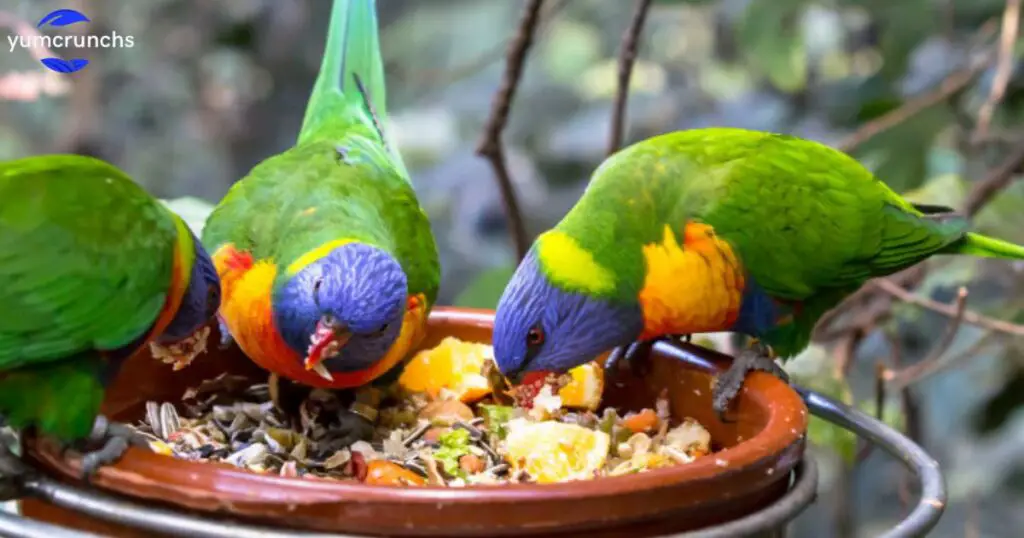Hummingbirds are known for their vibrant colors, remarkable agility, and their ability to hover in mid-air. These tiny birds have a high metabolism and need a diet rich in nectar to fuel their energetic lifestyle. Making hummingbird food is a simple and cost-effective way to attract these delightful creatures to your garden or backyard. In this guide, we will explore how to make hummingbird food and provide the nourishment they need to thrive.
Are you wondering how to make hummingbird food that will entice these enchanting birds to visit your outdoor space? Look no further! By following a few easy steps, you can whip up a delectable treat that will have hummingbirds flocking to your feeder. With just two ingredients, sugar and water, you can create a sweet nectar that closely mimics the natural nectar found in flowers. This homemade hummingbird food is not only budget-friendly but also allows you to have complete control over the ingredients, ensuring a safe and healthy treat for these tiny avian visitors.
To make hummingbird food, start by mixing one part white granulated sugar with four parts of water. For example, you can use 1 cup of sugar and 4 cups of water. Boil the mixture for around one to two minutes to help dissolve the sugar and kill any potential bacteria or mold spores. Allow the solution to cool completely before filling your hummingbird feeder. It’s important to note that using honey, artificial sweeteners, or food coloring is not recommended, as they can be harmful to hummingbirds. By providing this homemade nectar in a clean and well-maintained feeder, you can attract these delightful birds and enjoy their graceful presence in your surroundings.
Homemade Hummingbird Food Recipe
Making your own homemade hummingbird food is quick and easy. With just two simple ingredients, you can create a nourishing nectar that will attract these beautiful birds to your garden. To make the homemade hummingbird food, combine one part white granulated sugar with four parts water. For example, use 1 cup of sugar and 4 cups of water. Heat the mixture until the sugar dissolves, let it cool, and fill your hummingbird feeder. Remember to avoid using honey, artificial sweeteners, or food coloring, as they can be harmful to hummingbirds.
Homemade hummingbird food provides a safe and cost-effective alternative to store-bought options. By following this easy recipe, you can mimic the natural nectar found in flowers and provide a nutritious treat for these tiny avian visitors. Remember to clean and refill your feeder regularly to maintain the freshness of the food and ensure the health of the hummingbirds. Enjoy the beauty and grace of these remarkable creatures as they visit your garden and delight you with their presence.
Why Make DIY Hummingbird Food?
Making your own DIY hummingbird food offers several advantages. Firstly, it allows you to have full control over the ingredients, ensuring a safe and healthy treat for the hummingbirds. By using simple and readily available ingredients like sugar and water, you can avoid harmful additives or artificial sweeteners. Secondly, DIY hummingbird food is cost-effective. Instead of purchasing pre-made nectar, you can save money by making your own solution at home. Lastly, it’s a rewarding experience. Creating homemade hummingbird food gives you the satisfaction of providing for these delightful birds and attracting them to your garden.
DIY hummingbird food also provides flexibility. You can adjust the sweetness of the nectar to suit the preferences of the hummingbirds in your area. Additionally, making your own food allows you to experiment with different flavors, such as adding a touch of fruit essence to the solution. This customization can further enhance the appeal of your homemade nectar to attract more hummingbirds. By choosing to make DIY hummingbird food, you not only ensure the well-being of these enchanting birds but also have the opportunity to explore your creativity and contribute to their conservation.
Hummingbird Food Ingredients
Hummingbird food requires only two basic ingredients: sugar and water. The ideal ratio for making hummingbird food is one part sugar to four parts water. For example, you can use 1 cup of sugar mixed with 4 cups of water. The sugar provides the necessary energy for hummingbirds, while the water acts as a carrier and dilutes the sweetness to mimic natural nectar. It’s important to use white granulated sugar, as other sweeteners like honey or artificial substitutes can be harmful to these tiny birds.
When making hummingbird food, avoid using food coloring or additives. The bright red color of commercial hummingbird feeders is sufficient to attract the birds. Any additional additives may not be safe for their consumption. Additionally, ensure that the sugar used is fully dissolved in the water to prevent the formation of mold or bacteria. By keeping the ingredients simple and sticking to sugar and water, you can create a homemade hummingbird food that is safe, nutritious, and appealing to these delightful creatures.
How to Make Hummingbird Food

Making hummingbird food is a straightforward process that requires just a few simple steps. Start by mixing one part white granulated sugar with four parts water. For example, use 1 cup of sugar and 4 cups of water. Heat the mixture on the stove until the sugar is fully dissolved. Allow the solution to cool completely before filling your hummingbird feeder. Remember not to use honey or artificial sweeteners, as they can be harmful to hummingbirds.
When making hummingbird food, it’s important to maintain cleanliness and hygiene. Clean your hummingbird feeder thoroughly before refilling it with fresh nectar. Regularly check and clean the feeder to prevent the growth of mold or bacteria. Place the feeder in a shaded area of your garden or patio, away from direct sunlight, to prevent the nectar from spoiling too quickly. By following these simple steps, you can create homemade hummingbird food that will attract these beautiful birds and provide them with the nourishment they need.
Can I use tap water?
Can I use tap water for hummingbird food? Yes, you can. Tap water is safe to use as long as it is free from contaminants such as chemicals or pollutants. However, it is recommended to use filtered or distilled water to ensure the best quality for hummingbird nectar. This helps prevent any potential harm to the birds and keeps the feeder clean.
Using tap water for hummingbird food is convenient and readily available. Just make sure to avoid using water that has been treated with chlorine or other chemicals. If your tap water is chlorinated, let it sit out for a few hours before using it to allow the chlorine to dissipate. Remember to change the hummingbird food regularly to maintain freshness and cleanliness.
What kind of sugar should I use?
When making hummingbird food, it is important to use the right kind of sugar, such as plain white granulated sugar or Angel Food Cake. Avoid using brown sugar, powdered sugar, or artificial sweeteners. Mix 1 part sugar with 4 parts water to create the hummingbird nectar. Boil the water to dissolve the sugar, then let it cool before filling the feeder. Remember to clean the feeder regularly and replace the nectar every few days to keep the hummingbirds healthy.
Using the correct sugar is crucial for hummingbird food. Stick to plain white granulated sugar, avoiding brown sugar, powdered sugar, and artificial sweeteners. For the nectar, combine 1 part sugar with 4 parts water. Boil the water to dissolve the sugar, cool it down, and fill the feeder. Keep the feeder clean, replacing the nectar every few days to ensure the well-being of the hummingbirds.
Should I boil the water?

Boiling the water for hummingbird food is recommended to ensure its safety. Boiling kills any potential bacteria or impurities present in the water. Fill a pot with water and bring it to a rolling boil. Once the water reaches a boiling point, let it boil for about one minute. After boiling, allow the water to cool down before mixing it with sugar to create the hummingbird nectar. Boiling the water helps maintain the health and well-being of the hummingbirds.
Yes, it is advisable to boil the water when making hummingbird food. Boiling the water serves as a precautionary measure to eliminate any harmful bacteria or impurities that may be present. Simply heat the water in a pot until it reaches a rolling boil. Let it boil for approximately one minute before allowing it to cool. Once the water has cooled, it can be mixed with sugar to prepare the hummingbird nectar. Boiling the water ensures a safe and healthy feeding environment for the hummingbirds.
How long can I store extra sugar water in the fridge?
When storing extra sugar water in the fridge for hummingbird food, it is important to know how long it can be kept. Generally, you can store it for up to one week. This duration ensures the freshness and quality of the hummingbird food. It is advisable to label the container with the date to keep track of its storage time. Remember to clean the feeder regularly and replace the sugar water to maintain the health of the hummingbirds.
To summarize, you can store extra sugar water in the fridge for hummingbird food for about one week. Label the container and clean the feeder regularly for the birds’ well-being.
How often should I change the food in the hummingbird feeder?
Hummingbird feeders should have their food changed every 2 to 3 days. This frequency ensures that the nectar remains fresh and doesn’t spoil. Changing the food regularly also prevents the growth of harmful bacteria and molds. Clean the feeder before refilling it with fresh nectar to maintain the health of the hummingbirds.
To summarize, change the food in the hummingbird feeder every 2 to 3 days to keep it fresh and prevent spoilage. Regular cleaning of the feeder is essential to maintain the well-being of these beautiful birds. How to Make Hummingbird Food Safely and Responsibly
When should I put out my hummingbird feeder?

When should I put out my hummingbird feeder? Hummingbirds typically return in spring when flowers bloom. It’s best to hang your feeder a week before their expected arrival. Place it in a shaded area with easy access for the birds. Monitor the feeder regularly and clean it once a week.
Hummingbirds are attracted to bright colors and sweet nectar. They migrate and follow blooming patterns, so timing is crucial. By setting up your feeder early, you provide a food source when they need it most. Remember to maintain the feeder’s cleanliness to ensure healthy hummingbird visitors.
Why shouldn’t I add red dye to the hummingbird food?
Why shouldn’t I add red dye to the hummingbird food? Red dye is unnecessary and potentially harmful to hummingbirds’ health. The vibrant color of the feeder itself is enough to attract them.
Artificial dyes may contain chemicals that can be toxic to hummingbirds. These chemicals can disrupt their natural digestive system and cause harm. It’s best to stick to a simple and safe hummingbird food recipe of sugar and water, without any additional additives or dyes. Your feeder will still be enticing to the hummingbirds without the need for artificial coloring.
What plants attract hummingbirds?
Hummingbirds are attracted to specific plants that provide nectar-rich flowers. These vibrant birds are particularly drawn to brightly colored blooms with tubular shapes. Trumpet vines, with their fiery orange flowers, are a favorite among hummingbirds. They also flock to salvias, such as scarlet sage and hummingbird sage, as well as bee balms and penstemons. These plants offer the nectar and energy hummingbirds need, making them ideal choices for attracting these delightful creatures to your garden.
Another set of plants that prove irresistible to hummingbirds are the columbines, known for their unique spurred flowers in various shades. The delicate fuchsia flower clusters of the coral honeysuckle are also a magnet for these tiny birds. Additionally, hummingbirds are fond of the bright red cardinal flower and the vibrant red or orange blossoms of the firebush. By incorporating these plants into your garden, you can create a haven for hummingbirds and enjoy their graceful presence throughout the seasons.
how to make hummingbird food in microwave?

To make hummingbird food in the microwave, mix one part sugar with four parts water (e.g., 1/4 cup sugar and 1 cup water). Stir until the sugar dissolves completely. Heat the mixture in a microwave-safe bowl for 1-2 minutes until hot but not boiling. Let it cool before filling the feeders.
Combine sugar and water (1:4 ratio) in a microwave-safe bowl. Stir until the sugar dissolves. Microwave for 1-2 minutes until hot (not boiling). Cool and fill the feeders, remembering to clean and refill them regularly.
How to make hummingbird food with water and sugarhow to make hummingbird food without sugar?
To make hummingbird food with water and sugar, follow these simple steps. First, boil one part water. Next, add four parts white granulated sugar to the boiling water. Stir the mixture until the sugar is completely dissolved. Allow the solution to cool down before pouring it into a clean hummingbird feeder. Remember to clean and refill the feeder every few days to keep the food fresh for the hummingbirds.
If you want to make hummingbird food without using sugar, there’s an alternative option. Start by boiling one part water. Once the water reaches a boil, remove it from heat. Allow the water to cool down before pouring it into a clean hummingbird feeder. It’s important to note that hummingbirds rely on the energy provided by sugar, so if you choose to omit sugar from their food, make sure to provide alternative natural nectar sources, such as planting nectar-rich flowers in your garden.
FAQ’s
What is a simple recipe for making hummingbird food?
Mix 1 part white granulated sugar with 4 parts boiling water, cool, and fill hummingbird feeders.
Can I use artificial sweeteners instead of sugar to make hummingbird food?
No, it is not recommended to use artificial sweeteners as they may be harmful to hummingbirds.
Conclusion
In conclusion, learning how to make hummingbird food is a simple and rewarding endeavor. By following the easy steps outlined in this article, you can create a nourishing and irresistible treat for these delightful creatures. Observing these incredible birds as they visit your feeder is an enchanting experience, and it’s no wonder that many people find themselves captivated by their beauty and grace. So, go ahead and give it a try! Making hummingbird food is a wonderful way to connect with nature and invite these fascinating birds into your world.
As you embark on this journey, remember to cherish the moments you spend observing these magnificent creatures. Nature has a way of captivating our hearts and minds, and by creating a welcoming space for hummingbirds, you are fostering a deeper connection with the natural world around you. Your efforts will not only bring joy to your own life but also contribute to the preservation of these delicate creatures. So, grab your sugar and water, mix up a batch of hummingbird food, and prepare to be amazed as these tiny wonders grace your garden with their presence. Happy birdwatching!

Daniel, a seasoned author with 8 years of expertise in SEO, brings a delectable blend of culinary flair and digital finesse to the food niche on his website.



